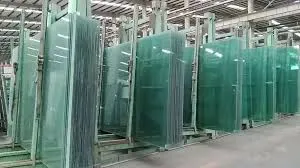The Allure and Functionality of Mirror Reflective Glass
In the realm of modern architecture and design, mirror reflective glass has emerged as a stunning and practical choice for various applications. This innovative material not only serves aesthetic purposes but also enhances the functionality of buildings, interiors, and even smaller design elements. Its dual characteristics of reflection and transparency create a unique interplay of light, space, and visual appeal.
At first glance, mirror reflective glass captivates the eye with its sleek, polished surface. Its reflective properties allow it to mimic the appearance of a mirror, providing an elegant look to both residential and commercial structures. This glass is often used in facades, where large panels reflect the surrounding environment, creating a dynamic interplay between the building and its landscape. As the sunlight shifts throughout the day, so too does the appearance of the glass, making it a living element of architectural design.
One notable advantage of mirror reflective glass is its ability to enhance energy efficiency. The reflective coating helps to regulate temperature by reflecting solar heat away from the building. This feature reduces the need for air conditioning in warmer months and contributes to lower energy costs. When utilized in conjunction with other energy-efficient building materials, mirror reflective glass can significantly reduce the overall carbon footprint of a structure, making it an environmentally friendly choice.
mirror reflective glass
Apart from its energy-efficient properties, mirror reflective glass can be beneficial for privacy. It allows occupants to enjoy the views outside while preventing others from seeing in during daylight hours. This characteristic is particularly valuable in urban environments where buildings are in close proximity to one another. As such, mirror reflective glass provides an oasis of privacy without compromising on the natural light that enhances indoor spaces.
In terms of design versatility, mirror reflective glass can be tailored to suit various styles and aesthetic preferences. It is available in a range of colors, tints, and finishes, which allows architects and designers to create custom looks that complement their vision. Whether used in the sleek lines of a contemporary office building or the elegant curves of a modern home, mirror reflective glass can adapt to different architectural styles seamlessly.
However, it's important to note that the use of mirror reflective glass is not without its challenges. For instance, the reflective nature can sometimes lead to unintentional glare for pedestrians or nearby residents. Therefore, careful consideration and planning are essential when integrating this material into any design project. Moreover, ongoing maintenance is required to keep the glass pristine and free from smudges or scratches, which can detract from its reflective qualities.
In conclusion, mirror reflective glass stands out as a remarkable material that bridges the gap between aesthetics and functionality. Its ability to reflect and absorb light creates striking visual landscapes while simultaneously offering practical benefits such as energy efficiency and privacy. As architectural trends continue to evolve, the role of mirror reflective glass in modern design is likely to expand, making it a staple in both residential and commercial applications. With its unique properties and stunning appearance, mirror reflective glass will continue to be a favored choice for those seeking to make a bold statement in their design endeavors.
 Afrikaans
Afrikaans  Albanian
Albanian  Amharic
Amharic  Arabic
Arabic  Armenian
Armenian  Azerbaijani
Azerbaijani  Basque
Basque  Belarusian
Belarusian  Bengali
Bengali  Bosnian
Bosnian  Bulgarian
Bulgarian  Catalan
Catalan  Cebuano
Cebuano  Corsican
Corsican  Croatian
Croatian  Czech
Czech  Danish
Danish  Dutch
Dutch  English
English  Esperanto
Esperanto  Estonian
Estonian  Finnish
Finnish  French
French  Frisian
Frisian  Galician
Galician  Georgian
Georgian  German
German  Greek
Greek  Gujarati
Gujarati  Haitian Creole
Haitian Creole  hausa
hausa  hawaiian
hawaiian  Hebrew
Hebrew  Hindi
Hindi  Miao
Miao  Hungarian
Hungarian  Icelandic
Icelandic  igbo
igbo  Indonesian
Indonesian  irish
irish  Italian
Italian  Japanese
Japanese  Javanese
Javanese  Kannada
Kannada  kazakh
kazakh  Khmer
Khmer  Rwandese
Rwandese  Korean
Korean  Kurdish
Kurdish  Kyrgyz
Kyrgyz  Lao
Lao  Latin
Latin  Latvian
Latvian  Lithuanian
Lithuanian  Luxembourgish
Luxembourgish  Macedonian
Macedonian  Malgashi
Malgashi  Malay
Malay  Malayalam
Malayalam  Maltese
Maltese  Maori
Maori  Marathi
Marathi  Mongolian
Mongolian  Myanmar
Myanmar  Nepali
Nepali  Norwegian
Norwegian  Norwegian
Norwegian  Occitan
Occitan  Pashto
Pashto  Persian
Persian  Polish
Polish  Portuguese
Portuguese  Punjabi
Punjabi  Romanian
Romanian  Russian
Russian  Samoan
Samoan  Scottish Gaelic
Scottish Gaelic  Serbian
Serbian  Sesotho
Sesotho  Shona
Shona  Sindhi
Sindhi  Sinhala
Sinhala  Slovak
Slovak  Slovenian
Slovenian  Somali
Somali  Spanish
Spanish  Sundanese
Sundanese  Swahili
Swahili  Swedish
Swedish  Tagalog
Tagalog  Tajik
Tajik  Tamil
Tamil  Tatar
Tatar  Telugu
Telugu  Thai
Thai  Turkish
Turkish  Turkmen
Turkmen  Ukrainian
Ukrainian  Urdu
Urdu  Uighur
Uighur  Uzbek
Uzbek  Vietnamese
Vietnamese  Welsh
Welsh  Bantu
Bantu  Yiddish
Yiddish  Yoruba
Yoruba  Zulu
Zulu 

